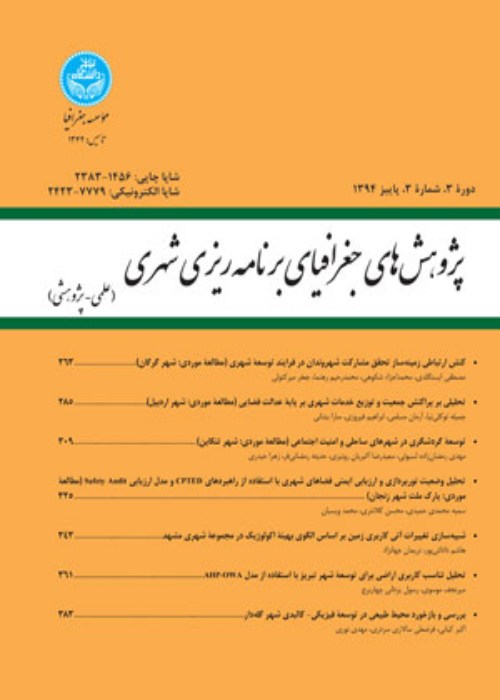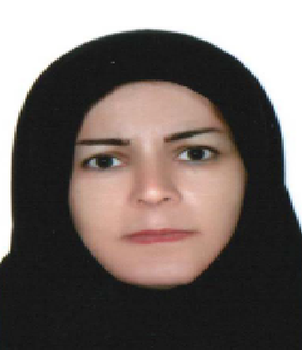Comparative analysis of urban vitality in old and new neighborhoods with the approach of the right to the city; A case study of neighborhoods in Yazd city
As a man-made artifact, the city has the same life cycle as humans. Among the contemporary damages of the city, we can mention the decline and withering of urban neighborhoods. The neighborhoods on which the city's dynamism depends to a great extent have turned into dormitories where the presence of citizens has decreased drastically. Solving this challenge that threatens many opportunities in the city and many problems stemming from this damage is the focus of part of the research and projects of the city's specialists. Cities can be considered successful when they can host lively street activities, whereby people with different characteristics can come together with ease in public spaces, at different times, and for different purposes. Vitality, after all, is the symbol of successful urbanism. As it was said, the lack of urban vitality is a global problem, and in Iran, all cities can be considered involved with this problem. Numerous political, economic, social, cultural, physical, etc. factors are the basis for the lack of vitality of urban neighborhoods, which have similarities and differences between the reasons in different contexts. Political decisions in the past years have caused social and economic imbalance in the city of Yazd, which can be clearly seen in the vitality of the neighborhoods of the city of Yazd. For this reason, in this research, the urban vitality of one of the historical neighborhoods of the city is examined along with two other neighborhoods, one with an informal settlement structure and the other with a strong economic structure in the affluent part of the city. In these neighborhoods, it should be described according to its physical and social structure.
The research method in this study is descriptive-analytical with a practical purpose. The statistical population of this research is all the residents of Skan Kavir, Safaiyeh, and Fahadan neighborhoods, and the sample size was obtained using the Cochran formula of 340, according to the population of these neighborhoods, there are 170 questionnaires in Eskan Kavir neighborhood, 70 questionnaires in Safaiyeh neighborhood and 100 questionnaires in Fahadan neighborhood. The questionnaire was completed randomly. In order to conduct theoretical studies and provide measures of vitality in urban spaces, the method of collecting information has been to use the library method and the use of existing documents. Convenience and comfort, safety and security, diversity and attractiveness, leisure and fun, scope and range, interaction and sense of place. To conduct operational studies, field methods, interviews, photography, and questionnaires were used, and data were analyzed by SPSS software, T-tests, regression, and ANOVA.
The concept of vitality is a mental concept, most of which are manifested in a neighborhood in the form of a series of behaviors, and judging the vitality of a neighborhood is not easily obtained, and sometimes vitality is not found in a neighborhood with a high quality of life, and in a neighborhood with a low quality of life. Vitality is visible. The city of Yazd, one of the ancient cities of the country, has lost its traditional texture in recent years due to the migration process. After examining the studied neighborhoods, the Fahadan neighborhood has the highest level of vitality in the historical context of Yazd, it is in the second rank of Safaiyeh neighborhood among the wealthy neighborhoods of the city, and it is ranked third in the marginal neighborhood of Eskan Kavir. The above ranking is based on a set of indicators and variables, but only paying attention to the numbers in the study of a psychological issue such as vitality makes the conclusion far from reality. It seems that in order to understand the vitality of neighborhoods, in addition to quantitative studies, it is necessary to analyze the mental space. Residents. What separates the concept of vitality from other concepts that are close to it is the issue of diversity, and the fact that Fahadan neighborhood is in the first place is also due to the high diversity in the body and the people present in the environment.
The view of the right to the city by Henry Le Four can be examined from two perspectives: the right that the citizen has over the city and the right that the city has over the citizen. It is not fair and logical that any action outside of logic, value, norm, and humanity, in general, is done in the city, and in the end, the consequences are placed on the shoulders of the city. The major part of human growth and excellence is owed to the city, so the city also has a right on the shoulders of the citizens. The right to the city is not only a material concept; citizens and city dwellers must be involved in the production and atmosphere of the city; produce and reproduce the space they produced. But one of the rights that citizens enjoy is the right to a lively urban atmosphere, dynamic neighborhoods, worthy of dignity, and course the efforts of the citizens of a neighborhood. But to achieve this right, the citizen must first observe the right; To produce a space that reproduces the lively urban space for all citizens. Producing and increasing the public space that all citizens can benefit from, increasing the collective spirit (not individual and atomized), and establishing distributive justice in society are among the rights that the city deserves. The sum of these cases makes the society out of the individual state and creates local communities; Where the fate of people is important to each other. Increasing the capacity of society in meeting the needs (commensurate with the values and priorities) leads to the growth and development of the local community. The output of this path is the provision of resources for everyone and intergenerational and intergenerational justice, a stable situation where development is not for a few but for all and not for a few years but forever.
- حق عضویت دریافتی صرف حمایت از نشریات عضو و نگهداری، تکمیل و توسعه مگیران میشود.
- پرداخت حق اشتراک و دانلود مقالات اجازه بازنشر آن در سایر رسانههای چاپی و دیجیتال را به کاربر نمیدهد.



